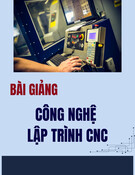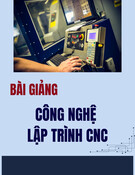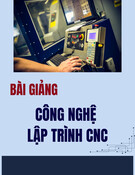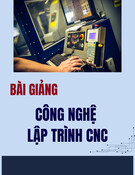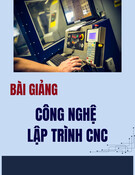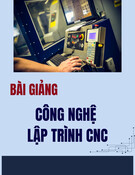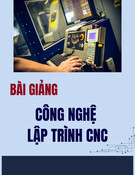Contents lists available at ScienceDirect
Applied Soft Computing 11 (2011) 2743–2755
Applied Soft Computing
j o u r n a l h o m e p a g e : w w w . e l s e v i e r . c o m / l o c a t e / a s o c
Intelligent process modeling and optimization of die-sinking electric discharge machining
S.N. Joshi a, S.S. Pande b,∗
a Department of Mechanical Engineering, Indian Institute of Technology Guwahati, Guwahati 781039, India b Department of Mechanical Engineering, Indian Institute of Technology Bombay, Mumbai 400076, India
a r t i c l e
i n f o
a b s t r a c t
Article history: Received 31 January 2009 Received in revised form 11 June 2010 Accepted 17 November 2010 Available online 24 November 2010
This paper reports an intelligent approach for process modeling and optimization of electric discharge machining (EDM). Physics based process modeling using finite element method (FEM) has been inte- grated with the soft computing techniques like artificial neural networks (ANN) and genetic algorithm (GA) to improve prediction accuracy of the model with less dependency on the experimental data. A two-dimensional axi-symmetric numerical (FEM) model of single spark EDM process has been devel- oped based on more realistic assumptions such as Gaussian distribution of heat flux, time and energy dependent spark radius, etc. to predict the shape of crater, material removal rate (MRR) and tool wear rate (TWR). The model is validated using the reported analytical and experimental results. A comprehensive ANN based process model is proposed to establish relation between input process conditions (current, discharge voltage, duty cycle and discharge duration) and the process responses (crater size, MRR and TWR) .The ANN model was trained, tested and tuned by using the data generated from the numerical (FEM) model. It was found to accurately predict EDM process responses for chosen process conditions. The developed ANN process model was used in conjunction with the evolutionary non-dominated sorting genetic algorithm II (NSGA-II) to select optimal process parameters for roughing and finishing opera- tions of EDM. Experimental studies were carried out to verify the process performance for the optimum machining conditions suggested by our approach. The proposed integrated (FEM–ANN–GA) approach was found efficient and robust as the suggested optimum process parameters were found to give the expected optimum performance of the EDM process.
© 2010 Elsevier B.V. All rights reserved.
1. Introduction
The process has however, some limitations such as high spe- cific energy consumption, longer lead times and lower productivity which limit its applications. Researchers worldwide are thus, focus- ing on process modeling and optimization of EDM to improve the productivity and finishing capability of the process.
Electric discharge machining (EDM) is a widely used uncon- ventional manufacturing process that uses thermal energy of the spark to machine electrically conductive as well as non-conductive parts regardless of the hardness of the work material. EDM can cut intricate contours or cavities in pre-hardened steel or metal alloy (Titanium, Hastelloy, Inconel) without the need for heat treatment to soften and re-harden the materials. The process has also been applied to shape the polycrystalline diamond tools and machine of micro holes and 3-D micro cavities [1,2]. During the EDM operation, tool does not make direct contact with the work piece eliminat- ing mechanical stresses, chatter and vibration problems. EDM has thus, become an indispensable machining option in the meso and micro manufacturing of difficult to machine complex shaped dies and molds and the critical components of automobile, aerospace, medical and other industrial applications.
Keywords: Electric discharge machining (EDM) Process modeling and optimization Finite element method (FEM) Artificial neural networks (ANN) Scaled conjugate gradient algorithm (SCG) Non-dominated sorting genetic algorithm (NSGA)
Literature reports several attempts to develop analytical pro- cess models to predict process responses such as material removal rate (MRR) and surface roughness from the process parameters like current, discharge duration, discharge voltage, duty cycle, etc. Simplifying assumptions like constant spark radius, disc or uni- form shaped heat flux, constant thermal properties of work and tool material severely restrict their prediction accuracy [2]. Few attempts have also been directed to developing models from exper- imental results using statistical techniques [1]. These are specific to work–tool material pairs, shop conditions and thus, lack generality. Due to the complex and non-linear relationship between the input process parameters and output performance parameters, it is quite difficult to develop an accurate process model and use it to select the optimum process parameters for EDM process. In the recent years, the soft computing techniques viz. artificial neural networks (ANN), genetic algorithm (GA) have shown great promise in solving complex non-linear real life problems in such diverse
∗ Corresponding author. Tel.: +91 22 2576 7545; fax: +91 22 2572 6875/3480. E-mail address: s.s.pande@iitb.ac.in (S.S. Pande).
1568-4946/$ – see front matter © 2010 Elsevier B.V. All rights reserved. doi:10.1016/j.asoc.2010.11.005
fields of manufacturing process modeling, multi-objective opti- mization, pattern recognition, signal processing and control [1,3]. The ANN based process modeling offers several advantages such as the ability to capture non-linear and complex relationship between input process parameters and output performance parameters; to learn and generalize the input data patterns; to tolerate noise in an input pattern (data set) and relatively faster speed in learning [3]. GA provides better optimal solution in the global search space due its robustness [4].
cesses which are expected to overcome some of the limitations of conventional process modeling techniques. Initially, Tsei and Wang [10,11] compared various ANN training algorithms for pre- diction of MRR and surface roughness separately. They reported that adaptive-network-based fuzzy inference system (ANFIS) with bell shape membership function was best suited for MRR prediction [10] whereas ANFIS, radial basis function neural network (RBFN) and tangent multi layered perceptrons (TANMLP) were found more consistent in the prediction of surface roughness [11]. Wang et al. [12] developed hybrid model of EDM process using ANN and GA for prediction of MRR and surface roughness. GA was used to optimize the synaptic weightages. Fenggou and Dayong [13] have proposed another GA based ANN modeling approach for the prediction of the processing depth. The number of nodes in the hidden layer was optimized by using GA. Panda and Bhoi [14] have used back prop- agation neural network (BPNN) with Levenberg–Marquardt (LM) algorithm for the prediction of MRR.
The focus of the present work is thus, on developing an intel- ligent approach for process modeling and optimization of EDM process. Physics based process modeling using FEM has been inte- grated with the soft computing techniques like ANN and GA to improve prediction accuracy of the model with less dependency on the experimental data. This approach will help a process engi- neer to improve the process productivity, finishing capability and economical operation of die-sinking EDM process.
Su et al. [15] developed an ANN model of the EDM process and further used it to optimize the input process parameters by using GA. Later Sen and Shan [16], Mandal et al. [17], Gao et al. [18], Rao et al. [19,20] followed the similar methodology for the modeling and optimization of EDM process for different work–tool material pairs. Recently, Yanga et al. [21] used simulated anneal- ing (SA) technique with ANN for optimization of MRR and surface roughness. Tzeng and Chen [22] have used the fuzzy logic anal- ysis coupled with the Taguchi dynamic approach to optimize the machining precision and accuracy.
Rest of the paper is organized as under. Section 2 presents review of relevant papers on the use of ANN and GA for process modeling and optimization. Overview of the developed intelligent process model for EDM using FEM and ANN is presented in Section 3. Sec- tion 4 presents the overview of the thermo-physical (FEM) model of EDM process developed and its validation. Section 5 describes, in detail, the development of ANN based process model of EDM while Section 6 reports the approach for the selection optimal process parameters for roughing and finishing operations using NSGA- II. Section 7 presents the results of the verification experiments. Conclusions and contributions from this work are summarized in Section 8.
2. Literature review
The above referred process modeling and optimization approaches using AI techniques are based on the experimental data to predict work material removal or surface roughness under stan- dard experimental machining conditions for specific tool–work materials. Scant research work is reported on a comprehensive model to predict all output performance parameters viz. MRR, TWR and surface roughness in an integrated fashion.
In conclusion, it can be seen that no efficient, generalized approach to model the EDM process so far has been reported to study and predict the accurate crater shapes, MRR, TWR during EDM and use it further to derive the optimal process parameters.
In the present work, an attempt has been made to develop a comprehensive intelligent and integrated (FEM–ANN–GA) approach to model and optimize the die-sinking EDM process.
Literature reports extensive experimental and analytical stud- ies on process modeling and optimization of EDM process to improve its accuracy and productivity. Experimental research work is focused on obtaining process parameters to achieve optimal EDM performance by using various statistical techniques such as response surface methodology (RSM), factorial analysis, regression analysis, analysis of variance (ANOVA) technique, and Taguchi anal- ysis [1,2]. The recommendations based on these models are specific to tool, work materials, experimental conditions and thus, lack gen- erality.
3. Overview of process model development
Fig. 1 shows the proposed approach for the development of intelligent process model for EDM using FEM, ANN and GA. It pri- marily comprises of three stages:
• Numerical (FEM) modeling of the EDM process considering the
thermo-physical characteristics of the process.
• Development of ANN based process model based on the data generated using the simulation of the numerical (FEM) model. • Optimum selection of process parameters using GA based opti-
mization of ANN process model.
This
approach
integrated
of model
development (FEM–ANN–GA) has a peculiar merit that it is based on accu- rate FEM analysis and not on experimental data collection, which could be costly, time consuming and error prone. Important stages in the model development are discussed in the sections to follow.
On the analytical front, since the early seventies, researchers have attempted to model the electric discharge phenomena (plasma channel) and the mechanism of cathode and anode erosion in the EDM process [1,5]. Different thermal models have been pro- posed by taking a microscopic view of the process considering the spark and its surrounding area [6]. The reported thermo-physical models of the EDM process however, significantly over predict the process responses such as material removal rate (MRR) and surface roughness. This is primarily due to various simplifying assump- tions such as uniform (disc) heat source [5], point heat source [7], constant heat source radius [8,9] for all discharge conditions and constant thermo-physical properties over the temperature range [5,7]. These simplifying assumptions do not simulate the real life conditions and thus, severely limit the applicability of the results. Very scant literature has been reported on the study of shape of the crater produced at the cathode/anode surface after the spark. A need thus, exists to develop a numerical model based on the thermal analysis of EDM spark to predict accurately the crater and associated material removal by modifying the above stated assumptions.
4. Thermo-physical modeling of EDM process using FEM
Researchers, of late, are focusing upon employment of arti- ficial intelligence (AI) techniques viz. ANN, GA, fuzzy logic, etc. for the process modeling and optimization of manufacturing pro-
In this work, a two-dimensional axi-symmetric non-linear tran- sient thermo-physical (FEM) model of single spark EDM process
2744 S.N. Joshi, S.S. Pande / Applied Soft Computing 11 (2011) 2743–2755
S.N. Joshi, S.S. Pande / Applied Soft Computing 11 (2011) 2743–2755 2745
where q(t) is the heat flux to be appied at boundary 1 (Fig. 2), F is the fraction of total EDM spark power going to the cathode or anode, V is the voltage, I is the discharge current, ton is the discahrge duration and t is the time variable.
has been developed. Compared to the reported thermal models, more realistic assumptions were employed such as consideration of current–discharge duration dependent spark radius, Gaussian distribution of heat source, temperature dependent thermal prop- erties and consideration of latent heat of melting. Details regarding the thermo-physical (FEM) model development are discussed at length in our earlier paper [6]. Salient features of the model are presented here.
Fig. 2 shows the schematic diagram of the process continuum
and associated boundary conditions used.
Material removal in EDM process is primarily due to the melting and evaporation caused by intense heat generated by the spark plasma. As a result transient, Fourier heat conduction equation (Eq. (1)) with necessary boundary conditions was used.
(cid:2)
(cid:3)
(cid:2)
(cid:3)
+
Kt r
Kt
= (cid:3)Cp
(1)
1 r
∂ ∂r
∂T ∂r
∂ ∂z
∂T ∂z
∂T ∂t
The governing equation with boundary conditions was solved by using finite element method (FEM) solver ANSYS 10.0 [23]. A 2-D continuum was considered for the analysis. Four-node axi-symmetric thermal solid element ‘Plane 55’ was used for dis- cretization of the continuum. Material properties viz. temperature dependent thermal conductivity, specific heat, density and latent heat of melting were employed. The transient heat transfer problem was solved using the discharge duration as the time step for anal- ysis. Nodes showing temperature more than melting point were selected and later eliminated from the work domain. A typical crater generated is shown in Fig. 3. Crater size (depth and radius) and associated material removal were computed. Following this methodology, comprehensive thermal analysis of both the cathode (work) and anode (tool) erosion was carried out.
where r and z are the coordinates of cylindrical work domain, T is the temperature, Kt is the thermal conductivity, (cid:3) is the density and Cp is the specific heat capacity of work piece or tool mate- rial. The heat entering into the workpiece due to EDM spark, q was derived (Eq. (2)) considering the spark radius as a function of current–discharge duration and Gaussian distribution of heat source [6].
(cid:4)
(cid:7)
(cid:6)
(cid:5)
0.88
q(t) = 3.4878 × 105FVI0.14
exp
−4.5
(2)
t ton
ton0.88
The results obtained from our numerical model (with and with- out considering latent heat of melting) were compared with those from earlier analytical models and the published experimental data. Recently, Yeo et al. [5] critically compared the prediction accuracies of five well referred thermal models and concluded that the MRR results predicted by DiBitonto’s model [7] are closer to the experimental data compared to all the other models. Fig. 4 shows the comparison of MRR predicted by our model, Yeo’s recom- mended model (DiBitonto et al. [7]) and the AGIE SIT experimental data. It is seen that, the values of MRR predicted by our model are further closer to the experimental results compared to those by DiBitonto et al. [7] for a wide range of discharge energy levels up to 650 mJ. Our numerical model would thus, give better prediction of MRR compared to the reported models. This may be due to the
Fig. 1. EDM process model development and optimization approach.
Fig. 2. Process continuum and boundary conditions. Fig. 3. Predicted bowl shaped crater using FEM analysis. (crater depth: 30.2 (cid:2)m, crater radius: 70.3 (cid:2)m, work material – AISI P20 mold steel, discharge current 10 A, spark on-time 100 (cid:2)s and discharge voltage 40 V).
ing techniques (ANN, fuzzy logic, etc.) were studied. Statistical techniques offer advantages such as, reduced numbers of trials, optimum selection of parameters, assessment of experimental error, and qualitative estimation of parameters effect. While such techniques are useful for identifying general trends in process inputs and outputs, they are beset with many limitations. Fitting curves to non-linear and noisy data needs the selection of trans- forms, which, inevitably, is subjective and often becomes difficult when multiple inputs and multiple outputs are involved. The large variations in the factors may give misleading results and quite often guidelines on selection of optimum ranges of variables are not avail- able [24]. These considerations have led to the identification of the neural network approach, which overcomes some of these difficul- ties.
2746 S.N. Joshi, S.S. Pande / Applied Soft Computing 11 (2011) 2743–2755
In recent times, neural networks (NN) and fuzzy logic (FL) techniques are commonly used in the modeling of manufacturing processes [25,26]. FL based strategies depend on the rule base for- mulated which often varies from developer to developer [27]. As the number of input and output parameters increase, the develop- ment of rule base becomes quite tedious. FL provides the explicit information about the process to be modeled. However, large amount of real life data is needed for automatic rule generation. Requirement of human expertise, process knowledge and skill fur- ther limits the applicability of FL based strategies. On the other hand, ANNs are well proven techniques when reasonable amount of training data is available [26].
incorporation of more accurate and realistic equivalent spark radius equation, which is a function of current and discharge duration. In addition, our model considers the transient analysis of single spark with the expanding radius, which may also add more accu- racy to our results. In comparison, DiBitonto’s model approximated the spark as point on cathode with created hemispherical crater, which is quite simplified, compared to reality.
ANNs are well known due to their ability to approximate non-linear and complex relationship between process parameters and performance measures. Relatively faster learning, generaliza- tion capabilities from imprecise and noisy data make them more suitable option in modeling of complex manufacturing processes though they do not provide explicit information about the process to be modeled [14–21,24–26].
It was, therefore, thought appropriate and convenient to develop a comprehensive (4 inputs – 4 outputs) EDM process model using ANN for quicker and accurate prediction of process performance results. A comprehensive process model of EDM was developed using ANN to accurately predict the process responses viz. MRR, TWR and crater dimensions in an integrated manner. To train the ANN based process model, exhaustive data was gener- ated by using numerical (FEM) simulations of the process model developed. The following ranges of the input process parameters identified from the published research [1,2] and machining hand- book [28] were chosen for our study.
For higher values of discharge power and discharge duration (discharge energy > 650 mJ), our model under predicts the MRR compared to the experimental results. This may be due to the fact that longer pulses with higher values of current provide more sur- face area to heat conduction, which might lead to reduction in heat density. Constant value of duty factor may also result in compara- tively less MRR [6]. This could possibly be the reason for the model prediction deviating from the experimental results. The shape of crater (bowl) predicted by our numerical (FEM) model (Fig. 3) was found to have a shape similar to the reported experimental results. The complete problem solving procedure for the thermal analy- sis was automated by using ANSYS Parametric Design Language (APDL) [23]. Important process parameters were identified and extensive parametric studies were carried out to study the effect of different process parameters on the performance parameters for a work–tool pair as AISI P20 mold steel and copper. From the results, it was concluded that, the performance measures of EDM process such as MRR, TWR and crater dimensions are influenced by four interacting process parameters viz. discharge current, dis- charge duration, discharge voltage and duty cycle. It has noted that there exists a complex and non-linear relationship between input process parameters and output performance parameters [6].
• Discharge current: 5–10–20–30–40 A • Discharge duration: 25–50–100–300–500–700 (cid:2)s • Duty cycle: 50–65–80% • Break down voltage: 30–40–50 V • Work material: AISI P20 mold steel • Tool material: Copper
The FEM based numerical model developed in this work was found to be accurate but computationally expensive due to the non- linear and complex nature of the governing equation and boundary conditions, particularly to carry out exhaustive parametric analy- sis for suggesting the optimum process parameters. This provided motivation to develop an ANN based process model based on the data generated on the FEM model that can be used to predict the performance parameters of the EDM process reasonably accurately and quickly for a set of chosen input process conditions.
Various ANN configurations viz. radial basis function neural net- work (RBFN) (4-N-4) and feed forward back propagation neural network (BPNN) (4-N-4, 4-N1-N2-4) were extensively tried out for their prediction performance. The primary objective was to develop a single comprehensive process model of the 4 inputs – 4 outputs type. The overview of the development of RBFN and BPNN based process model and their prediction performances are discussed in details as under.
5. Intelligent process modeling using ANN
5.1. Development of RBFN based process model
With the primary objective of the present work outlined above, various modeling techniques such as Statistical techniques (Regression analysis, Taguchi’s method, etc.) and soft comput-
RBFN is alternative supervised learning network architecture to the multilayered perceptrons (MLP). The topology of the RBFN is similar to the MLP but the characteristics of the hidden neu-
Fig. 4. Comparison of computed and experimental results: cathode erosion.
S.N. Joshi, S.S. Pande / Applied Soft Computing 11 (2011) 2743–2755 2747
Fig. 5. Network topology of RBFN.
work 4-250-4 with spread factor of 0.12 gave AME of about 19%. It was found to be the best possible configuration. Fig. 6 shows the variation of the testing errors of all performance parameters with the testing datasets for the 4-250-4 RBFN network with spread factor of 0.12.
rons are quite different (Fig. 5). It consists of an input layer, one hidden layer and an output layer. The input layer is made up of source neurons with a linear function that simply feeds the input signals to the hidden layer. The neurons calculate the Euclidean dis- tance between the center and the network input vector, and then passes the result through a non-linear function (Gaussian func- tion/multiquadric/thin plate spline, etc.). It produces a localized response to determine the positions of centers of the radial hid- den elements in the input space. The output layer, which supplies the response of the network, is a set of linear combiners, which is given by [29],
N(cid:8)
f (x) =
(3)
wijG (||x − ci|| · b)
i=1
where N is the number of data points available for training, wij is the weight associated with each hidden neuron, x is the input variable, ci is the center points and b is the bias. The localized response from the hidden element using Gaussian function [29] is given by,
From Fig. 6, it can be observed that the 4-250-4 RBFN network predicts the MRR, crater depth and crater radius with reasonable mean prediction error (ME) of about 10% and about 80% of the total testing datasets lie within an error bound of ±15%. The network shows poor prediction capability for the TWR with mean prediction error (ME) of about 46% and only 25% of the total datasets lie within the error bound of ±15%. Overall, this best possible trained network (4-250-4) gave very poor prediction performance (prediction error of TWR of the order of 50–150%). In spite of simplicity in design and faster learning, 4-N-4 RBFN configuration was not found suitable for the EDM process model development due to its poor generalization capability. This might be due to insufficient training data and local nature of fitting.
(cid:2)
(cid:3)
(4)
G (||x − ci|| · b) = exp
(||x − ci|| · b)2
− 1 2(cid:4)2 i
In comparison with RBFN configuration, BPNN configuration with a fast learning algorithm viz. scaled conjugate gradient (SCG) [30] gave much superior results for our problem. The details regard- ing the development of BPNN based process model viz. network architecture, training, testing and the selection of suitable ANN architecture for our problem are presented at length elsewhere [6]. The overview of the development of BPNN based process model is presented in the next section.
5.2. Development of BPNN based process model
where (cid:4)i is the spread of Gaussian function. It represents the range of ||x − ci|| in the input space to which the RBF neuron should respond. Usually, the spread should not be more than the possi- ble maximum distance between input vector and the center of the RBF. It is determined based on number of hit and trials [26]. The transformation from input layer to the hidden layer is non-linear but the transformation from the hidden layer to the output layer is linear. Determination of number of hidden neurons, centers ci of the RBF neurons and the weights wij of the output layer based on the given training samples are the key tasks in RBFN design. These parameters were optimized using Orthogonal Least Square (OLS) approach [29].
Fig. 7 shows the schematic diagram of a BPNN configuration with two hidden layers, one input layer and output layer each. BPNN configuration with SCG algorithm was tried out. Exhaustive numerical experimentation was carried out to choose the optimal BPNN architecture by varying the number of hidden layers (sin- gle and two layered) and number of neurons in each hidden layer (from 4 to 30). The 4-5-28-4 BPNN architecture was found to be more accurate and generalized with very good prediction accuracy (of about 7%) in comparison with the 4-250-4 RBFN configuration. Fig. 8 shows the error in prediction of process responses viz. MRR, TWR, crater depth and crater radius for various testing data sets. It was seen that, about 90% of the testing dataset lie within 15% of error bound (Fig. 8). This might be due to its global nature of learn- ing, ability to optimize the learning rate and momentum constant. As a result, the process model based on 4-5-28-4 BPNN architecture was chosen as the final process model developed.
Using the thermo-physical (FEM) model [6], a dataset of total 278 input–target pairs for the chosen work–tool pair was prepared. Dataset was divided into a training set (262 input–target pairs) and a testing set (16 input–target pairs). Performance of each can- didate network (RBFN and BPNN) was tested by studying three types of errors viz. prediction error of each performance param- eter (MRR/TWR/crater size) of each input–target pair of the testing dataset, mean error of each performance parameter for the com- plete testing dataset and the average mean error (AME) of all the performance parameters for the whole testing dataset. To choose the optimal network configuration, number of simulations has been carried out by varying the spread factor from 0.15 to 0.4. RBFN net-
Fig. 6. Variation of testing error: 4-250-4 RBFN network with spread factor 0.12.
parameters and output performance parameters, it is quite difficult to select the optimum process parameters for specific application of EDM process i.e. roughing or finishing operation.
Literature reports, GA as a better optimization methodology over the traditional optimization techniques due to its advantages viz. robustness, independency of gradient information and use of inherent parallelism in searching the design space [4,15–20]. In the present work, the following ANN–NSGA-II approach (Fig. 9) was developed for the selection of optimum EDM process parameters for roughing and finishing operations.
• ANN based process model developed earlier is used to predict the values of the output performance parameters on the basis of input process parameters.
• Multiple objectives are defined for the GA based optimization for
2748 S.N. Joshi, S.S. Pande / Applied Soft Computing 11 (2011) 2743–2755
roughing and finishing applications.
• Non-dominated sorting genetic algorithm II (NSGA-II) based opti- mization strategy [32] is applied to obtain a set of optimal input process parameters.
6.1. Selection of suitable optimization strategy
Fig. 7. Schematic of BPNN architecture.
Compared to the earlier reported works based on experimen- tal results, our ANN model was found to be more accurate and generalized as it predicted the intermediate data points with good prediction accuracy. This approach of process model development is unique as the ANN model predicts EDM process responses (MRR, TWR, and crater size) quickly and accurately from the input process conditions without the need to go for a rigorous FEM analysis. The intelligent ANN based process model developed was further inte- grated with an optimization algorithm to obtain process conditions for optimum performance of the EDM process.
Owing to the complex nature of EDM process and conflicting relationship exists between input process parameters and output performance parameters making it very difficult to determine opti- mal process parameters for improving the process performance. There is no single optimal combination of process parameters, as the influences of the parameters on the MRR, TWR and crater depth are often opposite in nature. It is thus, difficult to find a single opti- mal combination of parameters for higher MRR, lower TWR and lower crater depth as the case may be. Hence, there is a need for a multi-objective optimization method to arrive at the solutions to this problem. Various classical methods of obtaining the solutions to multi-objective problems such as Min–Max, Weighted Sum and Distance Function methods [4] change the multi-objective problem into a single objective, with the corresponding weights based on their relative importance. These methods suffer from a drawback that the decision maker must have a thorough knowledge of ranking of objective functions. Also, these methods fail when the objective functions become discontinuous. In such situations, GA possesses advantages that it does not require any gradient information and has inherent parallelism in searching the design space, thus making it a robust adaptive optimization technique. For multi-objective optimization methods, some modification to simple GA is necessary. In this present work non-dominated sorting genetic algorithm II (NSGA-II) [31,32] in conjunction with ANN based process model is used to obtain the optimal process conditions for EDM process.
6. Optimum selection of EDM process parameters using genetic algorithm
The non-dominated sorting genetic algorithm is an evolution- ary, fast and elitist genetic algorithm which provides multiple Pareto-optimal solutions to the multi-objective optimization prob- lems. NSGA-II is essentially a modified form of conventional GA. The crossover and mutation operators remain as usual, but selection operator works differently from simple GA. Selection is done with the help of crowded-distance comparison operator, based on rank- ing (according to non-domination level) and crowding distance.
Selection of the most favorable (optimum) EDM process param- eters is based on shop experience or handbook values, which often results in inconsistent machining performance [1,2]. Due to the complex and non-linear relationship between the input process
Fig. 8. Prediction accuracy of 4-5-28-4 BPNN network.
Fig. 9. Integrated ANN–NSGA approach for process optimization.
S.N. Joshi, S.S. Pande / Applied Soft Computing 11 (2011) 2743–2755 2749
For roughing operation
Obj. 1[i] > Obj. 1[j] and Obj. 2[i] ≥ Obj. 2[j]
(5)
or
i /= j
Obj. 1[i] ≥ Obj. 1[j] and Obj. 2[i] > Obj. 2[j],
(6)
where i and j are the solution numbers.
If above rules are satisfied then the selected solution is marked as non-dominated. Otherwise the selected solution is marked as dominated. In the first sorting, all non-dominated solutions (N1) are assigned rank 1. From the remaining (N–N1) dominated solutions, candidate solutions are again sorted. The non-dominated solutions after the second sorting are ranked 2. Each solution is assigned a fitness equal to its non-domination level (1 is the best level). The procedure shown in Fig. 10 will be repeated till the Pareto optimal front is obtained. The steps are described as follows:
Fig. 11. A Typical chromosome.
6.2. Objective functions and variables
In the present work, following objective functions were defined
for the optimization of roughing and finishing EDM operations.
• For roughing operation
◦ Obj. 1 = Maximize MRR (for fast roughing operation). ◦ Obj. 2 = Maximize 1/(1 + TWR) (for moderate tool wear, eco-
nomical roughing operation).
• For finishing operation
◦ Obj. 1 = Maximize 1/(1 + Crater depth) (for superior quality sur-
face finish).
◦ Obj. 2 = Maximize 1/(1 + TWR) (for accurate and economical
operation).
◦ Obj. 3 = Maximize MRR (for faster finishing operation).
The ranges of the process variables taken for this study are pre-
sented in Section 5.
6.3. The integrated ANN–NSGA-II approach
Step 1: Parents are selected from the population by using the Tour- nament selection based method and then sorted using crowding distance algorithm [31,32] (from previous generation). The algo- rithm is presented at length in the step 4. Step 2: The selected population generates offspring using crossover and mutation operators. Simulated Binary Crossover (SBX) operator for crossover and polynomial mutation are used in this study. Fig. 11 shows a typical chromosome made up of 4 genes viz. duty cycle, current, discharge duration and discharge voltage. Step 3: Combine parent and offspring populations and perform a non-dominated sorting. If a solution is strictly better than any other solutions in all objectives then it is called non-dominant solution i.e. it is not dominated by any other solution and a set of such solutions is called non-dominated set. The first front being completely non-dominant set in such sorted population and the second front being dominated by the individuals in the first front only and the front goes so on. Each individual in each front are assigned rank (fitness) values based on the front in which they belong to. Individuals in first front are given a fitness value of 1 and individuals in second are assigned fitness value as 2 and so on. Step 4: Once the non-dominated sort is complete, the crowding distance is assigned. The crowing distance of a solution is a mea- sure of the search space around the solution which is not occupied by any other solution in the population. It expresses the Euclid- ian distance between each individual in a front based on their m objectives in the m dimensional hyper space. Crowding distance is assigned frontwise [31,32]. Comparing the crowding distance between two individuals in different fronts is meaningless. Large average crowding distance will result in better diversity in the population. The individuals in the boundary are always selected since they have infinite distance assignment. The stepwise crowd- ing distance (CD) assignment procedure is as under. Step 4.1: Say the number of elements in a Front is equal to p. Step 4.2: For each objective function (m = 1, 2, . . ., M), sort the ele- ments in the ascending order of objective function value (fm) i.e. find sorted indices vector (Im). Step 4.3: Assign the large CD values to boundary elements in sorted elements in step 4.2 or dIm = ∞, and for other solu-
= dIm
Fig. 10 shows the various steps of the integrated ANN–NSGA-II approach developed. Initially a real-parameter random population P of size N is created by using the results of the 4-5-28-4 BPNN based EDM process model (Section 5). It is sorted into different non-domination levels by checking whether the solution under consideration satisfies the rules given below:
p
1
Fig. 10. Flow chart of ANN–NSGA approach for optimization of EDM process param- eters.
tions j = 2 to (p − 1), the CD is calculated using,
Im j−1 m
= d
+
(7)
dIm
j
Im−1 j
Im j+1 f m − f m − f min f max
m
j denotes the solution index of jth member in the sorted is the CD value from
where Im list based on mth objective function. d
Im−1 j
and f min
previous objective function. f max
m
m are the maximum and
and f
Im j+1 m
Im j−1 m
minimum values of mth objective function. f are the objective function values of the neighboring elements in the sorted list from step 4.2. Step 5: The new generation is filled by each front subsequently until the population size exceeds the current population size from non-dominated sorted population from step 3. If by adding all the individuals in a front, the population exceeds maximum popula- tion size, then individuals in the front are selected based on their crowding distance in the descending order until the population size reached its maximum size.
2750 S.N. Joshi, S.S. Pande / Applied Soft Computing 11 (2011) 2743–2755
A computer code was written in MATLAB 7.0 to integrate the ANN based process model and the NSGA-II tool box developed by Sastry [33]. In the first iteration of the GA, the developed code provides the initial population of probable solutions (Parents) by calling the ANN based process model. In the subsequent iterations, the ANN based process model was used to compute the process responses viz. MRR, TWR and crater depth for the new offspring. Each NSGA-II run with 50 iterations took about 15–20 min on a Pentium IV machine with 2 GB RAM.
Using the above discussed NSGA-II algorithm and the ANN based process model developed earlier, analysis was carried out to select optimum process parameters for roughing and finishing operations for AISI P20–copper (work–tool) pair. The results are presented below.
requirement of the process engineer. Based on a specific require- ment say a high MRR with moderate TWR or a moderate MRR with lower TWR, a suitable combination of variables can be selected from Table A.1 (presented in Appendix A). For example with a require- ment of a high MRR with wear ratio less than 20% a process engineer can look for the possible combinations of input process param- eters. It is seen that a process parameters set with duty cycle of 80%, discharge current of 40 A, discharge duration of 415.7 (cid:2)s and discharge voltage of 50 V gives high MRR of 654.6 mm3/min and low TWR of 124.5 mm3/min with acceptable wear ratio of 19%. It can thus, be seen that the integrated ANN–GA based approach developed in this work can give the process engineer an efficient tool to choose a range of optimal process parameters for fast and economical roughing.
6.4. Optimum process parameters for roughing operation
6.5. Optimum process parameters for finishing operation
For finishing operation of the EDM process, three objective cri- teria were thought of viz. low crater depth (surface roughness), low TWR and moderate MRR. Methodology similar to the rough- ing application (outlined in the previous Section 6.4) was used to derive the Pareto optimal set.
During the present study the objective set for the optimization of roughing application was to maximize the MRR and minimize the TWR. Extensive studies using the NSGA-II have been carried out to identify the range of process parameters for optimal performance of EDM process. An initial random real valued population of 100 individuals was taken and fed it into the ANN based process model. In each generation of the NSGA-II, the process responses such as MRR, TWR and crater depth were predicted by the ANN based pro- cess model for the new individuals of the population. The fitness was evaluated through the objective criteria and NSGA-II to sur- vey the probability. A new population for next the generation was created based on the old population using different operator func- tions viz. selection (Tournament with size 4), Crossover (Simulated Binary Crossover with probability 0.5) and Mutation (polynomial of the order of 20 with probability 0.1). The generation was executed recursively to search for the Pareto-optimal front until the num- ber of generations exceeds the limiting value. For attaining better convergence, 50 generations were taken in this study.
Table A.1 (Appendix A) presents the typical results of NSGA-II for the roughing optimization problem. About 100 optimal process parameters (decision variables) of the non-dominated solution set (optimal Pareto front) and the corresponding process responses (objective function values) were obtained. The non-dominated solution set obtained over the entire optimization process is shown in Fig. 12. This shows the formation of the Pareto front leading to the final set of solutions.
Since none of the solutions in the non-dominated set is abso- lutely better than any other, any one of them is an acceptable solution. The choice of one solution over the other depends on the
Table A.2 (Appendix A) shows the typical results predicted by the NSGA-II for the finishing operation of EDM process. Fig. 13 shows the surface generated by all the optimal solutions given by the NSGA-II. It is observed that NSGA-II provided all the pos- sible combinations of input process parameters for best possible fitness values of the objective functions viz. minimize crater depth and TWR, and maximize MRR. The solutions encircled in red color suggested the best optimal solutions for finishing operation. They provide minimum crater depth, low TWR and moderate MRR. The other solutions also provide process conditions but they are not suitable for finishing operation. For example solution no. 2, Table A.2 which gives lower crater depth but has very high TWR. In a similar manner, solution no. 3, Table A.2 suggested low TWR, high MRR but gives very high crater depth, which is also not suit- able. After studying the Table A.2 and Fig. 13, it can be noted that a process parameter set with duty cycle of 56%, discharge current of 5 A, discharge duration of 25 (cid:2)s and discharge voltage of 33 V gives high quality surface finish (crater depth of 11.8 (cid:2)m) with minimum tool wear of 3.7 mm3/min and significant MRR of 24.2 mm3/min. The integrated ANN–GA approach with NSGA-II algorithm can thus provide a very effective tool for the process engineers to select the range of optimum machining conditions for the finishing operation.
Fig. 12. Pareto optimal front for roughing.
S.N. Joshi, S.S. Pande / Applied Soft Computing 11 (2011) 2743–2755 2751
From the above study, the range of optimum process param- eters for roughing and finishing operations of EDM have been suggested (Table 1).
Fig. 13. Optimal solutions for finishing operation.
The optimum results suggested by our approach (Table 1) were compared with the optimum process conditions recommended from experimental studies for the same work and tool mate- rial combinations by Amorim and Weingaertner [34,35]. They carried out exhaustive experiments for the selection of optimal process parameters for roughing and finishing operation of EDM process using AISI P20–copper (work–tool material) pair. The rec- ommended optimal values of process conditions are: discharge current of about 32 A, discharge duration 400 (cid:2)s and duty cycle 80% for roughing operation. Our results closely match with their experimental ranges particularly for the discharge duration and duty cycle. Our recommended current value is also in good agree- ment with their experimental results. The optimum value of the discharge voltage was not available as the experiments were con- ducted with constant value of open circuit voltage of 180 V.
7.1. Verification of optimum process conditions for roughing
To gain further confidence, it was thought appropriate to carry out a set of our own experiments to verify the optimal process conditions suggested by our FEM–ANN–GA approach. Details are presented in the next section.
7. Verification experiments
The aim of these experimental studies was to assess the effec- tiveness and robustness of the proposed FEM-ANN-GA approach by verifying the process performance corresponding to the optimal values of input process conditions suggested. Experiments have been conducted on the die-sinking EDM machine PS-50 ZNC, Elec- tronica (Pune, India) available at Godrej and Boyce Manufacturing Co. Ltd., Mumbai. AISI P20 mold steel and copper were chosen as the work material and tool material, respectively. Fig. 14 shows the workpiece and tool electrode specimens used in the experimental studies.
Table 1 shows that for roughing operation, the suggested opti- mal values for current, discharge voltage and duty cycle are the maximum values of the input parameter range used in this work. For the discharge duration, the optimal value is 400–420 (cid:2)s, which is an intermediate value in the respective parametric range. It was, thus, decided to verify the optimality of discharge duration by vary- ing its value within a range of 200–750 (cid:2)s. Table 2 lists the different machining conditions set up during the experimentation. The dis- charge voltage of 50 V, current 40 A and duty cycle of 80% were kept constant throughout. Special EDM oil with 20–40 kPa pressure was used as the dielectric medium. Table 2 shows the experimen- tal results observed during the optima verification experiments for roughing operation. Fig. 15 shows the variation of material removal rate with various values of discharge duration.
Fig. 14. Tool and workpiece specimen.
Table 1 Suggested parametric ranges. Process parameters Roughing Finishing Our study Our study Expt. studies [34] Expt. studies [35]
Current Discharge voltage Discharge duration Duty cycle 38–40 A 45–50 V 400–420 (cid:2)s 75–80% 32 A NA 400 (cid:2)s 80% 5–7 A 30–35 V 25–30 (cid:2)s 50–55% 3–5 A NA 12.5 (cid:2)s 50% NA – not available.
i
) n m
R W T
/ 3
.
.
.
.
.
.
m m
6 1 5
4 6 8
5 3 9 1
6 0 1 2
8 3 4 3
(
g v A
i
) n m
/ 3
.
.
.
.
.
.
.
.
.
.
0 1 5
1 9 7
1 2 5
7 3 9
m m
8 0 0 2
1 8 4 1
3 0 2 2
5 6 4 3
0 9 3 2
2 1 4 3
(
R W T
i
) n m
R R M
/ 3
.
.
.
.
.
.
m m
7 4 7 2 2
5 2 4 4 2
4 3 3 6 2
7 2 2 2 2
7 6 2 1 2
(
g v A
i
) n m
/ 3
.
.
.
.
.
.
.
.
.
.
m m
2 7 9 0 2
9 5 1 0 2
2 2 5 4 2
1 4 1 4 2
4 0 5 6 2
5 6 1 6 2
0 1 7 4 2
8 8 7 1 2
6 6 6 2 2
6 7 3 2 2
(
R R M
2752 S.N. Joshi, S.S. Pande / Applied Soft Computing 11 (2011) 2743–2755
i
i
) n m
i
( e m
3
3
3
3
3
3
3
3
3
3
g n n h c a M
i t
It can be noted that the MRR initially increases with the dis- charge duration, attains a peak at 400 (cid:2)s and then decreases further. The maximum MRR is obtained at the value of discharge duration (400 (cid:2)s) which closely matches with the optimum range suggested by our integrated FEM–ANN–GA approach (Table 1).
)
i
i
l a i r e t a m
Fig. 16 shows that the TWR continuously decreases with the discharge duration. For the suggested optimal value of discharge duration viz. 400 (cid:2)s, it shows acceptable tool wear of about 20 mm3/min.
.
.
.
.
.
.
.
.
.
.
5 1 2 2 6 6
2 0 5 2 6 6
4 6 9 3 6 6
7 7 9 7 5 6
7 9 3 2 6 6
3 5 9 5 6
2 1 1 6 5 6
9 5 2 9 5 6
1 4 3 2 5 6
4 9 3 4 5 6
l o o T
r e t f a t h g i e w
m g ( g n n h c a m
)
i
In conclusion it can be stated that the process performance at the optimal values suggested by our FEM–ANN–GA approach for producing maximum possible MRR with acceptable tool wear is realized in the experimental domain also. The optimum process conditions suggested by our approach can thus, be applied with confidence in practice.
i
l a i r e t a m
.
.
.
.
.
.
.
.
.
.
7 0 6 3 6 6
3 6 8 3 6 6
9 4 6 6
7 7 0 6 6 6
9 5 3 4 6 6
3 8 4 3 6 6
4 7 4 1 6 6
2 4 1 5 6 6
6 4 6 3 6 6
5 4 1 6 6
l o o T
e r o f e b t h g i e w
m g ( g n n h c a m
7.2. Verification of optimum process conditions for finishing
)
i
For finishing operation, our approach (FEM–ANN–GA) sug- gested minimum values of the process parameters viz. discharge current 5 A, discharge duration 30 (cid:2)s and discharge voltage 30 V (Table 1). From the parametric study of the EDM process [6], it was
i
.
.
.
.
.
.
.
.
.
.
4 8 7 2 8 6
3 1 6 7 7 6
9 4 8 5 5 6
3 0 7 8 7 6
8 4 6 3 5 6
7 3 0 2 6 6
9 2 4 7 6
8 9 1 1 6 6
6 3 6 0 8 6
8 1 1 8 8 6
l a i r e t a m k r o W
r e t f a t h g i e w
m g ( g n n h c a m
)
i
.
i
. r e p p o c
.
.
.
.
.
.
.
.
.
.
9 5 8 1 3 7
4 9 9 4 3 7
9 3 3 2 1 7
4 2 5 6 3 7
3 7 8 4 3 7
7 5 0 4 2 7
8 2 3 7 2 7
2 8 1 2 1 7
5 9 9 2 3 7
9 8 2 5 3 7
l a i r e t a m k r o W
e r o f e b t h g i e w
m g ( g n n h c a m
: l a i r e t a m
.
% 0 8 e l c y c y t u d
l o o t
,
) s (cid:2)
i
( e m
0 5 7
0 0 5
0 0 4
0 0 3
0 0 2
n o - k r a p S
i t
g n h g u o r
r o f
s t n e m
0 4
0 4
0 4
t n e r r u C
0 4
0 4
) A (
V 0 5 e g a t l o v e g r a h c s i d
,
.
B
B
A
B
A
B
A
B
A
A
o n
5
4
3
2
. t p x E
1
Fig. 15. Variation of MRR with discharge duration.
, l e e t s d l o m 0 2 P I S I A : l a i r e t a m k r o W
A 0 4 t n e r r u C
i r e p x e n o i t a c fi i r e V
2 e l b a T
Fig. 16. Variation of TWR with discharge duration.
S.N. Joshi, S.S. Pande / Applied Soft Computing 11 (2011) 2743–2755 2753
Table 3 Verification experiments for finishing. Sr. no. Current Surface roughness, Ra ((cid:2)m) Avg. surface roughness, Ra ((cid:2)m) 5 2.58 1
3.22 2 10
4.40 3 15
4.79 4 20
5 4.80 25
2.426 2.578 2.736 3.449 3.02 3.177 4.581 4.208 4.425 5.074 4.898 4.386 4.721 4.728 4.942
Work material: AISI P20 mold steel; tool material copper; discharge duration 30 (cid:2)s; discharge voltage 30 V; duty cycle 50%.
seen that discharge current was the main input process parameter which affects the crater depth. Therefore, it was thought appropri- ate to vary the discharge current within a range of 5–25 A to study the effect of the same. Total five experiments were carried out by using the machining conditions listed in Table 3.
current and then tapers off. Similar trend of variation of crater depth with discharge current was observed [6].
Table 3 shows the surface roughness measured at three different
locations and their average values.
Fig. 17 shows the variation of surface roughness with discharge current. The surface roughness initially increases with discharge
It is seen that fine surface finish (minimum surface rough- ness of about 2.6 (cid:2)m) can be obtained at discharge current 5 A. This matches with the recommended value by our FEM–ANN–GA approach.
Fig. 17. Variation of surface roughness with discharge current.
a
a
Table A.1 Typical results of ANN–NSGA (roughing operation). Set no. Pareto optimal set – roughing operation Process parameters (input) Performance parameters (output) Duty cycle (%) Current (A) Discharge duration ((cid:2)s) Voltage (V) MRR (mm3/min) TWR (mm3/min) Wear ratio (%)
501.2 a 71.4 a
1.4 53.1 0.9 46 80 80 80 80 80 79.9 35.3 40 31.2 36.3 40 35.3 40 417.2 108.6 416.3 699.9 207.2 698 415.7 33.7 50 34.6 50 50 50 50 189 702.1 293.4 563.1 685.9 545.4 654.6 7.9 364.3 4.7 124.5 19
80 80 80 80 80 40 38.5 40 40 40 275.2 699.5 527 245.6 253.7 50 48.6 50 50 50 670.7 577.8 643.5 676.9 675.1 245.4 13.7 76.6 296.6 282.1 36.6 2.4 11.9 43.8 41.8
80 80 80 80 80 40 40 40 40 39.6 221.6 323.9 327.2 280.2 699.9 50 50 50 50 49.2 682.1 663.2 662.7 669.7 610 339.3 182.8 179.7 237.6 22.1 49.7 27.6 27.1 35.5 3.6
330.8 267.3 259 80 80 80 80 40 40 40 38.7 226.7 262.1 267 700 50 50 50 49.2 681.2 673.3 672.3 593.6 16.8 48.6 39.7 38.5 2.8
a Insignificant crater.
64.3 50.2 320.7 201.1 a 10.1 7.9 47.2 30.2 a 1 2 3 4 5 6 7 . . . 34 35 36 37 38 . . . 55 56 57 58 59 . . . 80 81 82 83 . . . 96 97 98 99 100 80 80 80 80 46 40 40 40 40 37.6 560.6 605.7 232.3 307 417.2 50 50 50 50 33.7 640.1 636.2 679.9 665.4 201.4
2754 S.N. Joshi, S.S. Pande / Applied Soft Computing 11 (2011) 2743–2755
Table A.2 Typical results of ANN–NSGA (finishing operation). Set no. Pareto optimal set – finishing operation Process parameters (input) Performance parameters (output) Duty cycle (%) Current (A) Discharge duration ((cid:2)s) Voltage (V) Crater depth ((cid:2)m) TWR (mm3/min) MRR (mm3/min)
3.7 779.7 29.5 a
56.1 79.9 80.0 61.6 79.9 79.9 80 5.1 39.7 40.0 31.5 29.1 38.2 40 25.2 25.6 692.9 332.7 96.5 659.5 645.2 33.4 49.9 50.0 31.9 30.6 50 45.7 11.8 27.0 78.2 50.1 34.1 77 73.3 49.3 23.4 17.5 24.2 613.5 631.0 222.6 317.1 599.5 549.8
530 5.6 2.5 a
79.1 79.3 79.1 79.3 79.4 35.1 7.7 32.8 38.2 35.3 47.2 532.4 337.2 613.5 42.8 34.9 31.1 41.6 50 66 19.5 52.3 59.2 74.7 58.7 13.7 438.3 72.1 244.6 502.8 543.9
79.1 79.1 79.8 79.9 39.1 7.6 39.6 7.2 356.7 36.9 74.4 25.6 48.3 48.4 33.6 34.9 67.9 24.1 37.2 14.9 123.3 26.2 230.3 14.7 608.4 110.9 503.1 65.6
7.2
a Insignificant crater.
In conclusion, the intelligent process modeling and optimiza- tion approach developed in this work will provide a very effective tool to a process engineer to choose optimum process parameters for enhancing the productivity and finishing capability of the EDM process.
It is concluded that the process performance for the optimal values suggested by our FEM–ANN–GA approach for producing superior quality surface finish can be realized in the experimental domain. Recommended process parameters can thus, be applied in confidence.
Appendix A.
8. Conclusions
See Tables A.1 and A.2.
References
1 2 3 4 5 6 7 . . . 34 35 36 37 38 . . . 61 62 63 64 . . . 95 96 97 98 99 100 79.9 76.8 57.2 57.2 79.4 79.1 38 39.1 39.1 35.3 39.4 25.6 317.3 385 385 641.3 330.1 34.9 43.5 33.7 33.7 50 48.5 14.9 58.4 54.5 54.5 75.3 64.6 14.7 85.6 0 0 10.4 147.1 65.6 515.2 268.3 268.3 542 619.1
[1] K.H. Ho, S.T. Newman, State of the art in electrical discharge machining (EDM), Int. J. Mach. Tool Manufact. 43 (2003) 1287–1300.
[2] M. Kunieda, B. Lauwers, K.P. Rajurkar, B.M. Schumacher, Advancing EDM through fundamental insight into the process, CIRP Ann. 54 (2) (2005) 599–622. [3] A.P. Markopoulos, D.E. Manolakos, N.M. Vaxevanidis, Artificial neural network models for the prediction of surface roughness in electrical discharge machin- ing, J. Intell. Manufact. 19 (2008) 283–292.
[4] N.K. Jain, V.K. Jain, K. Deb, Optimization of process parameters of mechanical type advanced machining processes using genetic algorithms, Int. J. Mach. Tool Manufact. 47 (2007) 900–919.
[5] S.H. Yeo, W. Kurnia, P.C. Tan, Critical assessment and numerical comparison of electro-thermal models in EDM, J. Mater. Process. Technol. 203 (2007) 241–251. [6] S.N. Joshi, S.S. Pande, Development of an intelligent process model for EDM, Int. J. Adv. Manufact. Technol. 45 (3) (2009) 300–317.
[7] D.D. DiBitonto, P.T. Eubank, M.R. Patel, M.A. Barrufet, Theoretical models of the electrical discharge machining process. I. A simple cathode erosion model, J. Appl. Phys. 66 (9) (1989) 4095–4103.
[8] D.K. Panda, R.K. Bhoi, Developing transient three-dimensional thermal models for electro discharge machining of semi infinite and infinite solid, J. Mater. Process. Manufact. Sci. 10 (2) (2001) 71–90. [9] P. Allen, X. Chen, Process simulation of micro electro-discharge machining on molybdenum, J. Mater. Process. Technol. 186 (2007) 346–355. [10] K.M. Tsai, P.J. Wang, Comparison of neural network models on material removal rate in EDM, J. Mater. Process. Technol. 117 (2001) 111–124.
[11] K.M. Tsai, P.J. Wang, Predictions on surface finish in electrical discharge machin- ing based upon neural network models, Int. J. Mach. Tool Manufact. 41 (2001) 1385–1403.
In this paper, a unique integrated approach for modeling and optimization of EDM process has been developed using FEM, ANN and GA. Comprehensive thermo-physical analysis of EDM process was carried out using two-dimensional axi-symmetric non-linear transient FEM model. Using results from this FEM analysis, ANN based process model was developed and optimized for the pre- diction of material removal, tool wear and crater dimensions. Two basic ANN configurations viz. RBFN and BPNN were developed and extensively tested for their prediction performance and general- ization capability. Though the RBFN is fast and easy to configure, BPNN network with SCG training algorithm provided more accu- rate process model and has more potential for modeling of complex manufacturing processes such as EDM. Optimal BPNN based net- work architecture 4-5-28-4 was found to give good prediction accuracy (with mean prediction error of about 7%). The model was used further to select optimum EDM process parameters for rough- ing and finishing applications using NSGA algorithm. The optimal ranges of process parameters for roughing and finishing operations were identified. Our results matched closely with available optimal ranges reported in literature as well as our own experimental stud- ies. The proposed integrated (FEM–ANN–GA) approach was found efficient and robust as the optimum process parameters suggested were found to give the expected optimum performance of the EDM process. It also provides flexibility to the user to choose optimum parameters suiting specific shop needs.
[12] K. Wang, H.L. Gelgele, Y. Wang, Q. Yuan, M. Fang, A hybrid intelligent method for modeling the EDM process, Int. J. Mach. Tool Manufact. 43 (2003) 995–999.
S.N. Joshi, S.S. Pande / Applied Soft Computing 11 (2011) 2743–2755 2755
[24] L.N. Smith, R.M. German, M.L. Smith, A neural network approach for solution of the inverse problem for selection of powder metallurgy materials, J. Mater. Process. Technol. 120 (2002) 419–425. [13] C. Fenggou, Y. Dayong, The study of high efficiency and intelligent optimiza- tion system in EDM sinking process, J. Mater. Process. Technol. 149 (2004) 83– 87.
[25] D.S. Srinivasu, N. Ramesh Babu, A neuro-genetic approach for selection of pro- cess parameters in abrasive waterjet cutting considering variation in diameter of focusing nozzle, Appl. Soft Comput. 8 (2008) 809–819. [14] D.K. Panda, R.J. Bhoi, Artificial neural network prediction of mate- rial removal rate in EDM, Mater. Manufact. Process. 20 (2005) 645– 672.
[26] S.S. Panda, D. Chakraborty, S.K. Pal, Flank wear prediction in drilling using back propagation neural network and radial basis function network, Appl. Soft Comput. 8 (2) (2008) 858–871. [15] J.C. Su, J.Y. Kao, Y.S. Tarng, Optimisation of the electrical discharge machining process using a GA-based neural network, Int. J. Adv. Manufact. Technol. 24 (2004) 81–90. [16] M. Sen, H.S. Shan, Electro jet drilling using hybrid NNGA approach, Robot. Comp. Integr. Manufact. 23 (2007) 17–24. [27] M.F. Salido, S.A. Murakami, Comparison of two learning mechanisms for auto- matic design of fuzzy systems for rotating machinery, Appl. Soft Comput. 4 (2004) 413–422. [28] Machining Data Handbook V2, Machiniability Data Center. Metcut Research, 1981. [17] D. Mandal, S.K. Pal, P. Saha, Modeling of EDM using BPNN and multi-objective optimization using non dominating sorting algorithm – II, J. Mater. Process. Technol. (2007), doi:10.1016/j.jmatprotec.2006.12.030. [29] S. Chen, C.F.N. Cowan, P.M. Grant, Orthogonal Least Squares learning algorithm for radial basis function networks, IEEE Trans. Neural Netw. (1991) 302–309. [30] M.F. Moller, A scale conjugate gradient algorithm for fast supervised learning, [18] Q. Gao, Q.H. Zhang, S.P. Su, J.H. Zhang, Parameter optimization model in elec- trical discharge machining process, J. Zhejiang Univ. Sci. A 9 (1) (2008) 104– 108. Neural Netw. 6 (1993) 525–533. [31] N. Srinivas, K. Deb, Muiltiobjective optimization using non-dominated sorting in genetic algorithms, Evol. Comput. 2 (3) (1994) 221–248. [19] G.K.M. Rao, G.R. Janardhana, D.H. Rao, M.S. Rao, Development of hybrid model and optimization of metal removal rate in electric discharge machining using artificial neural networks and genetic algorithm, ARPN J. Eng. Appl. Sci. 3 (1) (2008) 19–30.
[32] K. Deb, A. Pratap, S. Agrawal, T. Meyarivan, A fast elitist non-dominated sorting genetic algorithm for multi-objective optimization: NSGA-II, IEEE Trans. Evol. Comput. 6 (2) (2002) 182–197.
[20] G.K.M. Rao, G.R. Janardhana, D.H. Rao, M.S. Rao, Development of hybrid model and optimization of surface roughness in electric discharge machining using artificial neural networks and genetic algorithm, J. Mater. Process. Technol. 209 (2009) 1512–1520. [33] K. Sastry, Single and Multi Objective Genetic Algorithm Toolbox for MATLAB in C++ (IlliGAL Report No. 2007017), University of Illinois at Urbana-Champaign, Urbana, IL, 2007.
[21] S.H. Yanga, J. Srinivas, S. Mohana, D.K. Lee, S. Balaji, Optimization of electric dis- charge machining using simulated annealing, J. Mater. Process. Technol. (2009), doi:10.1016/j.jmatprotec.2008.10.053. [34] F.L. Amorim, W.L. Weingaertner, Die-sinking EDM of AISI P20 Tool Steel Under Rough Machining Using Copper Electrodes, 20th COBEF, CD-Rom, Uberlandia, Brazil, 2003, pp. 1–5.
[22] Y.F. Tzeng, F.C. Chen, Multi-objective optimisation of high-speed electrical dis- charge machining process using a Taguchi fuzzy-based approach, Mater. Des. 28 (2007) 1159–1168. [35] F.L. Amorim, W.L. Weingaertner, The influence of generator actuation mode and process parameters on the performance of finish EDM of tool steel, J. Mater. Process. Technol. 166 (2005) 411–416. [23] ANSYS Version 10.0 Manuals, ANSYSTM Inc., USA.


![Bài tập tối ưu trong gia công cắt gọt [kèm lời giải chi tiết]](https://cdn.tailieu.vn/images/document/thumbnail/2025/20251129/dinhd8055/135x160/26351764558606.jpg)




